The Nine Exisiting Species Of Lovebirds
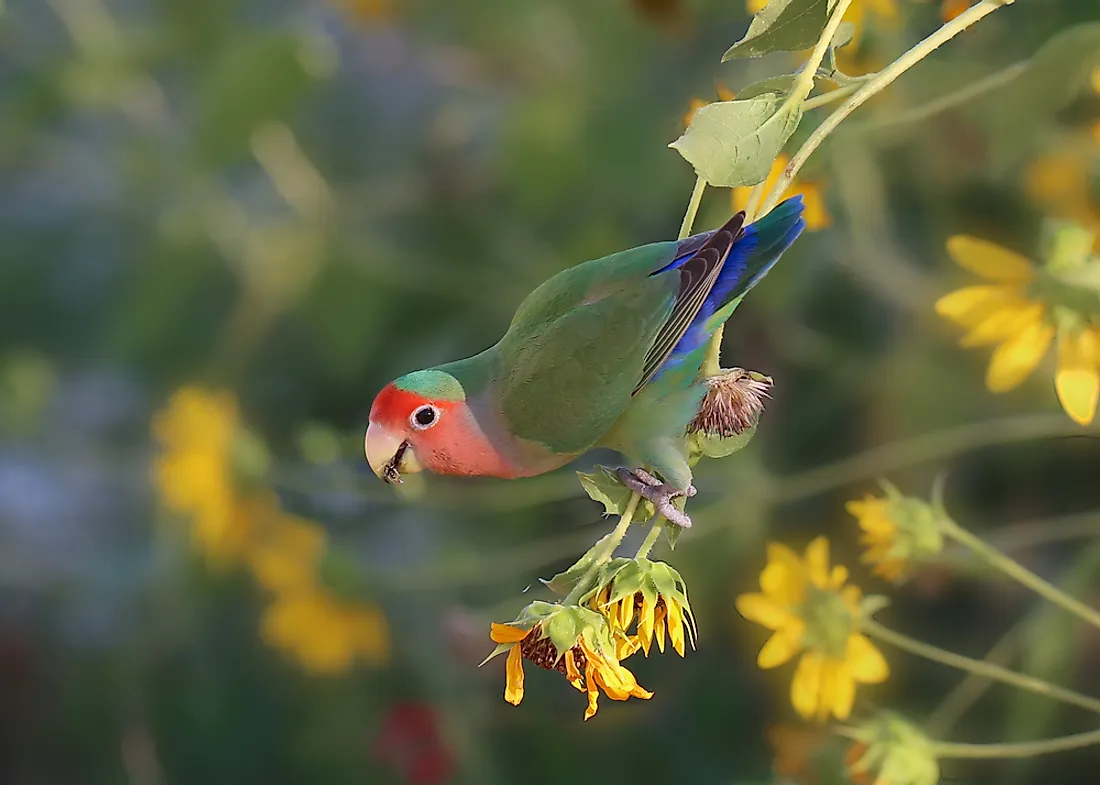
Lovebirds are birds of the genus Agapornis. These birds are famous for their bright colors, affectionate nature, and their strong monogamous pair bondings. There are nine species of this lovebirds. Eight of these species are native to African mainland and one is native to Madagascar. A few of these species are bred in captivity and kept as pets. The nine species of lovebirds have been mentioned below:
9. Black-collared Lovebird
Also known as the Swindern's lovebird and scientifically named Agapornis swindernianus, this lovebird species has a wide range in equatorial Africa. The birds have a length of around 13.5 cm. They are mostly green in color and feature a narrow, black band on the neck. The bill of this lovebird is grayish-black in color. They prefer to live high up in forest canopies where their shy nature leads them to live hidden in the safety of the trees. It is difficult to keep this bird in captivity due to its preference to feed on a native fig found in its habitat. Thus, it is rarely kept as pets. According to IUCN, this bird is labelled as ‘Least Concern'.
8. Yellow-collared Lovebird
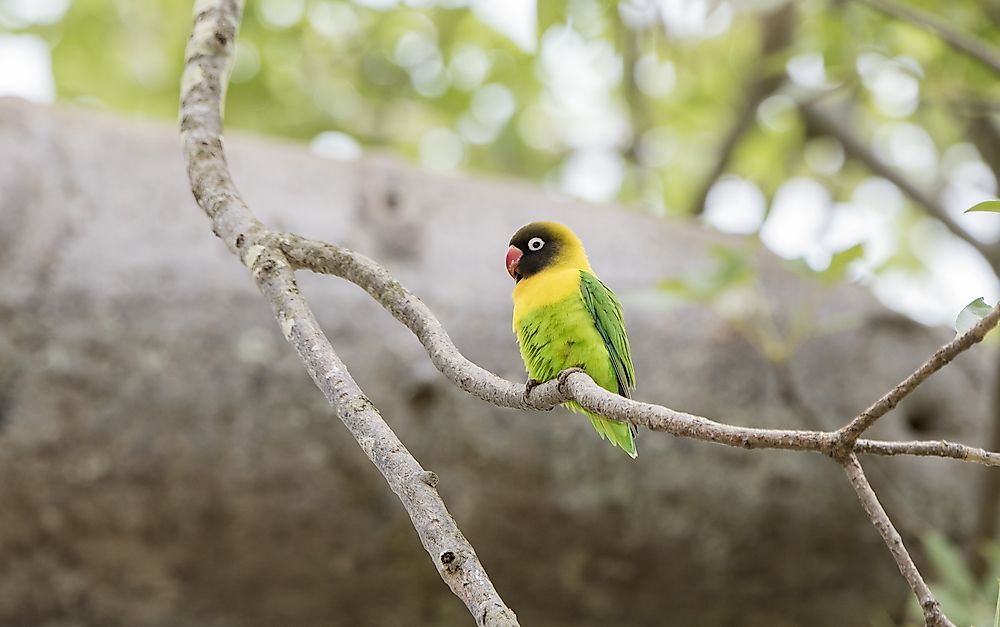
Also known by other names like the masked or eye ring lovebirds and scientifically known as the Agapornis personatus, this species is native to Tanzania. The birds of this species attain a length of about 14.5 cm. The upper parts of the bird are darker green in color than the lower parts. The birds have white rings surrounding their eyes, a bright red colored beak, and black head. The birds have a yellow collar on the breast that also extends into the nape of the neck.
7. Lilian's Lovebird
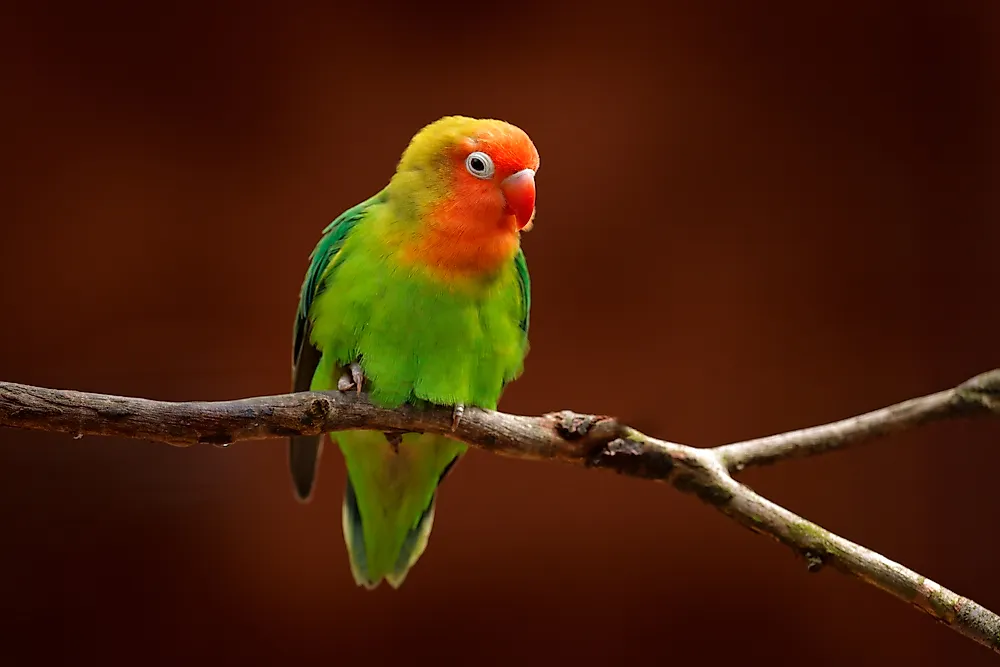
The Agapornis lilianae or the Nyasa lovebird is endemic to parts of eastern Africa. The species has been listed as ‘Near Threatened’ by the IUCN. There are less than 20,000 surviving birds of this species. Habitat loss is responsible for the current status of the bird. Recent cases of poisoning of these birds have also been observed. These birds are primarily green in color. However, the head and upper chest are orangish.
6. Fischer's Lovebird
The Agapornis fischeri is a species of parrot that is named after Gustav Fischer, an explorer from Germany. These birds are very colorful. Their wings, chest, and back are green in color. The tail’s upper surface has some blue or purple feathers. The beaks are a bright red while the face is orangish and color that becomes lighter towards the neck to give a golden yellow color. White eye rings surround the eyes. Some lovebirds of this species also have other colors like blue, yellow, etc. These birds are native to parts of eastern Africa. These birds are popular as pets and are thus bred in captivity. They are considered to have affectionate, intelligent, and charming personalities. Sadly, the wanton destruction of their native habitat has led to the labeling of these birds as ‘Near Threatened’ on the IUCN Red List.
5. Black-cheeked Lovebird
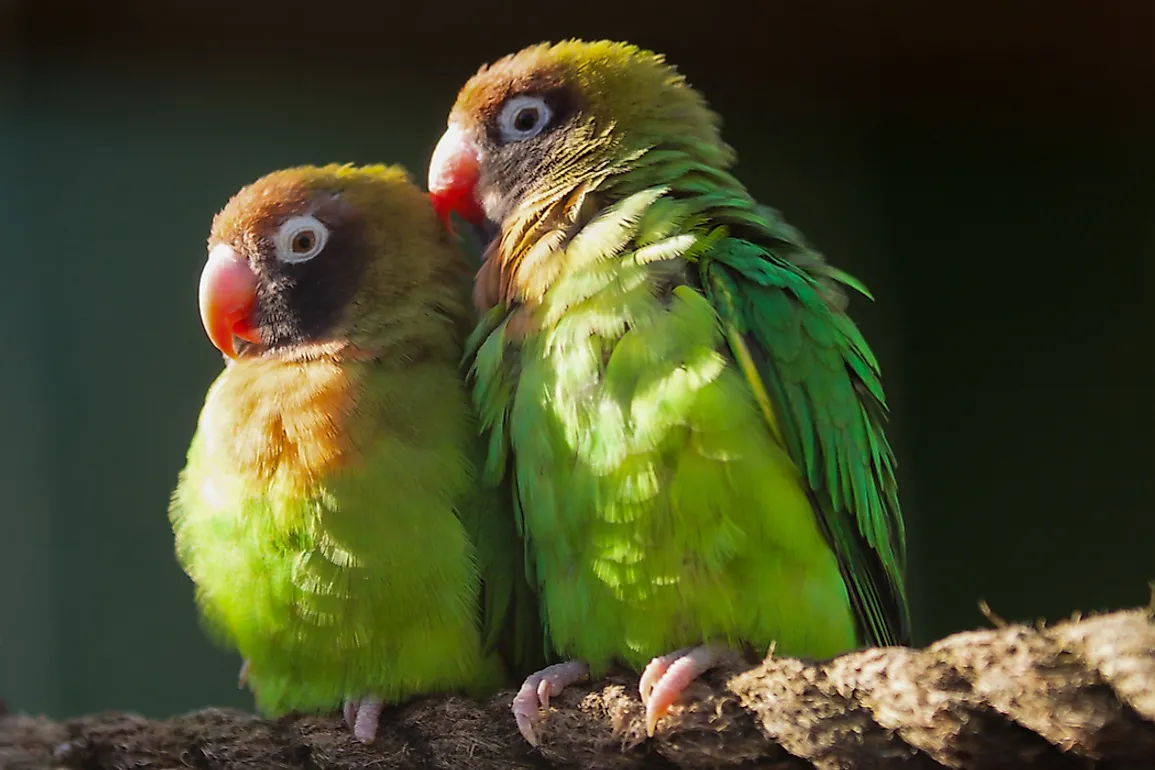
The Agapornis nigrigenis has a relatively restricted range in the southwest of Zambia. The bird is primarily green in color. It has a red beak, brown head, and white rings surrounding the eyes. The birds of this species live in places where water is available all year round. They feed on annual grass seeds as well as other types of vegetation and even the larvae of insects. The IUCN has listed the species as ‘Vulnerable’ on the Red List since the species is subjected to habitat loss.
4. Peach-faced Lovebird
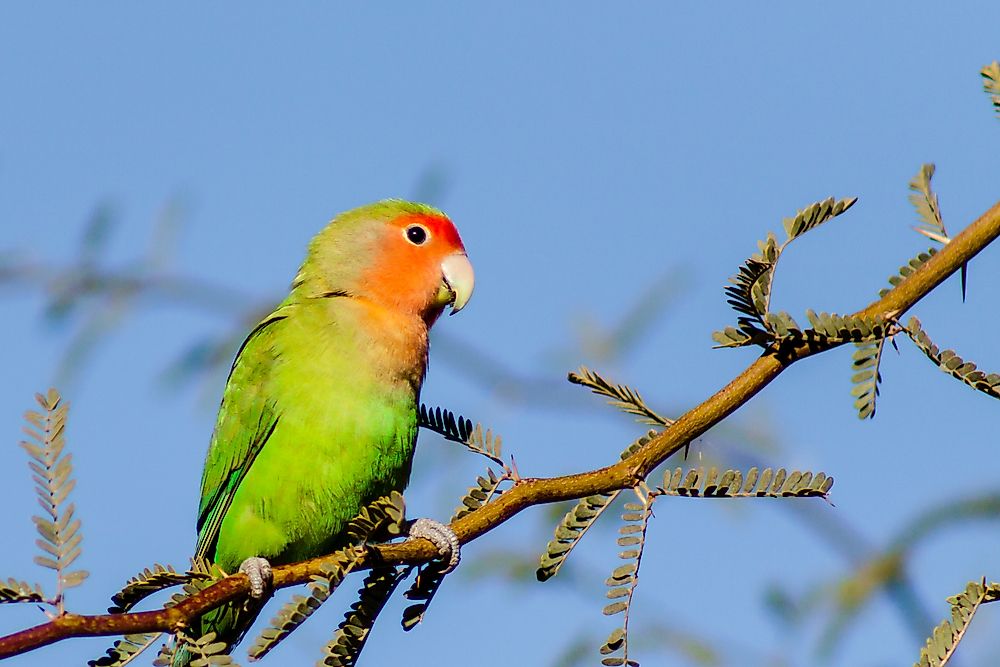
The Agapornis roseicollis is found in southwestern Africa’s arid areas. The birds are highly social animals and tend to live in small groups in their native habitat. The birds are mostly green and have a pink face and throat and blue rump. The feet are gray and beaks are horn colored. Seeds and berries constitute their diet. Due to their small size and ease of breeding, these lovebirds are one of the most common birds kept as pets. Capture of this species for the pet trade has, however, reduced its populations in certain areas.
3. Red-headed Lovebird
The Agapornis pullarius is a widely distributed African bird. The birds of this species are about 15 cm long. They have a green colored body. A part of their head is red (in males) or orange (in females) in color. The beaks and feet of both sexes are red and gray in color, respectively. The species is known to build its nest in a termites nest on trees or on the ground. Breeding this bird in captivity is difficult but they can be taught to build their nest into cork.
2. Black-winged Lovebird
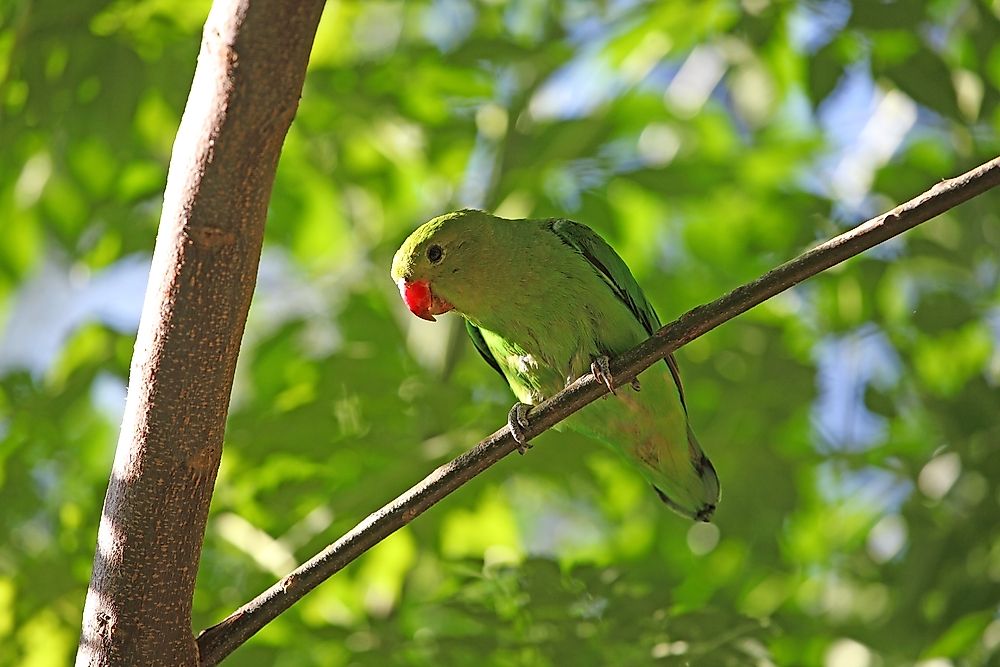
Also known as the Abyssinian lovebird and scientifically referred to as the Agapornis taranta, this species of lovebird has a length of around 16.5 cm making it the largest birds of the lovebird genus. The males and females of the species are mostly green in color but only the males have a red ring of feathers surrounding the eyes and red foreheads. The feathers under the wings of the male birds are black in color, and hence the name of this species. In the females, these feathers are brownish-black or greenish. Both sexes possess gray feet and green beak. The range of this species extends from southwestern parts of Ethiopia to southern parts of Eritrea. They are found at high altitude habitats in their range. These birds nest in cavities in trees and prefer food like apples, figs, corn, etc. They are rarely kept as pets as they are bred on a small scale in captivity.
1. Grey-headed Lovebird
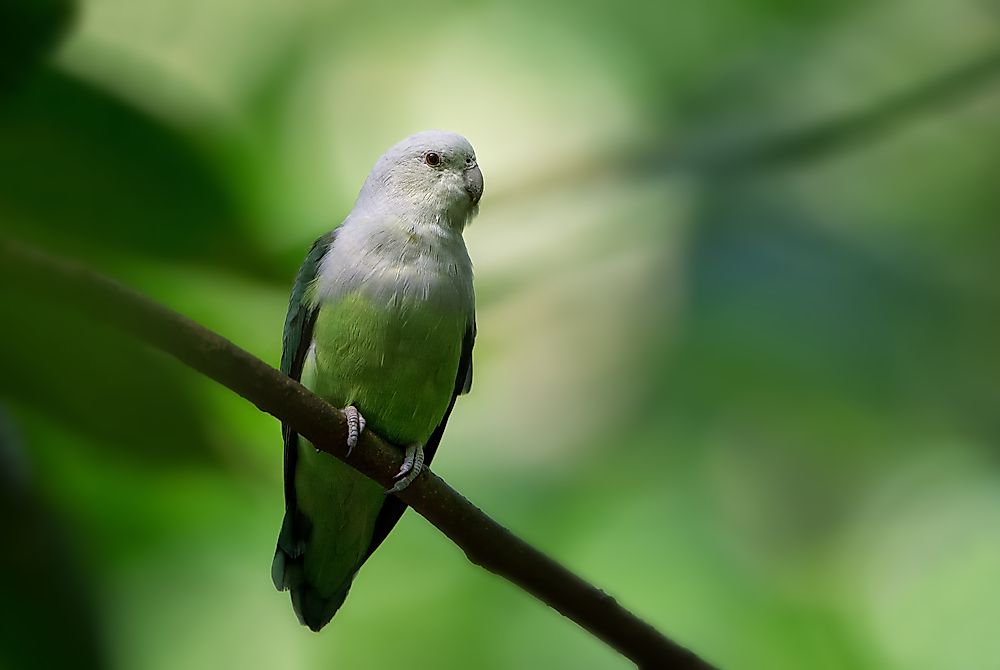
The Agapornis canus is native to the island nation of Madagascar and hence is also known as the Madagascar lovebird. It is the smallest species of lovebird. It is about 13 cm long and is sexually dimorphic. The males have a gray colored head and upper chest while the rest of the body is green in color. Females are entirely green. The feet and beaks of both the sexes are pale gray in color. These birds are powerful fliers. Their preferred diet consists of finch/canary seeds. They are not very popular as pets as it is difficult to breed them in captivity.











